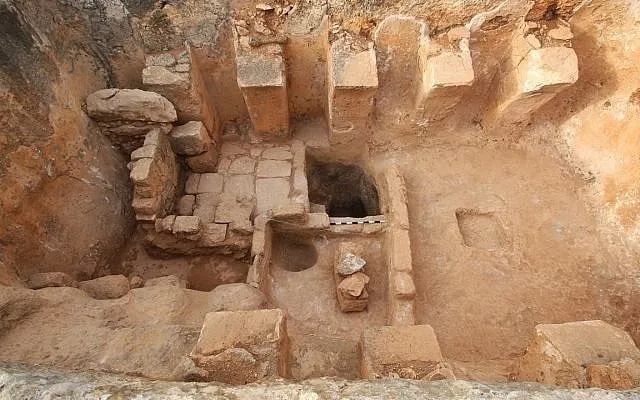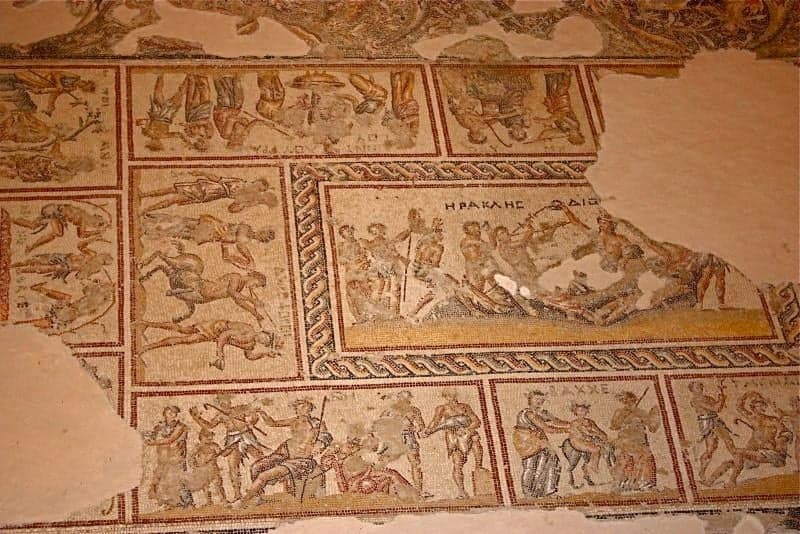Excavations in Zippori National Park, Israel, recently revealed Byzantine-era winepresses and structures, one of which has a mosaic depicting what appears to be a wine-drinking contest between the Greek gods Dionysus and Heracles.

The site of the Zippori National Park has many well-preserved mosaics, many of which are found in the Dionysus House. They depict the life of Dionysus, the Greek god of fertility and wine, with scenes of celebration with music, drinking, and dancing.
The area of Zippori was home to many diverse cultures in the 4th to 7th centuries AD, including a mixed pagan, Christian, and Jewish community. For this reason, archaeologists do not anticipate learning what specific society was responsible for building the wine presses.
Winepresses in Israel depict Greek Gods
The two winepresses were discovered inside a large five-arched water cistern located about 200 meters outside the town.
The winepresses are considered unique since they are the only ones from antiquity discovered that were built inside a covered water reservoir.
National Parks Authority archaeologist Dr Zvika Tzuk explained, “This wine press was found in the largest of two arched reservoirs in the Zippori National Park, which are part of the impressive water system at the site, including long aqueducts that provided water to the ancient city of Zippori,” The Times of Israel reports.

Other Byzantine-Greek finds in Israel
The winepresses discovered in Israel are not the first Greek Byzantine-era archaeological finds to have been discovered in the country.
A Byzantine-era coin showing Emperor Heraclius on one side and Golgotha, the site of Jesus Christ’s crucifixion—along with a complete winepress — was unearthed in late August outside Tel Aviv, Israel.
Both the 1,400-year-old currency and the wine press, which has mosaics on its floor, date back to the Byzantine period in Israel.
The 1,500-year-old settlement in which they were unearthed is located in what is now the Tel Aviv suburb of Ramat Ha-Sharon.
Archaeologists say that the large wine press clearly shows that the site was a centre of agricultural-industrial activity during the Byzantine period. Researchers from the Israel Antiquities Authority (IAA) also unearthed the foundations of a large structure that may have served as a warehouse of some kind or perhaps a farmstead.
Excavation leader Yoel Arbel states, “Inside the buildings and installations, we found many fragments of storage jars and cooking pots that were evidently used by labourers working in the fields here.”
“We also recovered stone mortars and millstones that were used to grind wheat and barley and probably also to crush herbs and medicinal plants,” added Arbel.

